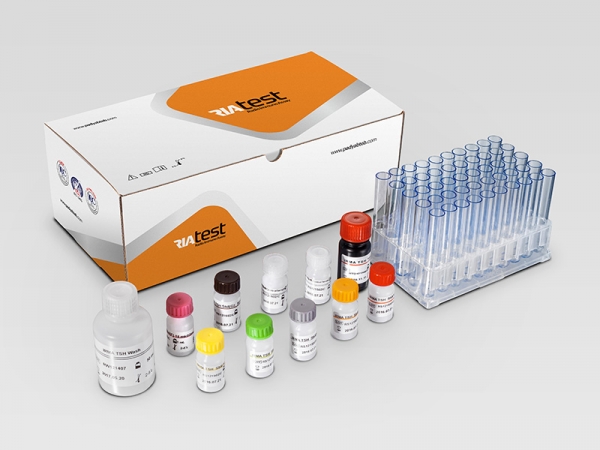| Name | LH RIA Test |
| Full name | Human LH RIA Test Kit |
| Category Name | Fertility RIA kits |
| Test | 100 |
| Principle | Immunoradiometric assay |
| Detection Range | 0-200 mIU/mL |
| Sample | 50 µL Serum |
| Sensitivity | 0.22 mIU/mL |
| Total Time | ~45 min |
| Shelf Life | 45 Days from the manufacturing date |
LH RIA kit description:
The Diagnostic Automation LH RIA test kit is for the quantitative determination of human luteinizing hormone (LH) concentration in human serum
Materials provided with LH RIA Test Kit:
1. Coated Tubes: Anti –LH monoclonal Antibody (100 tubes)
2. Anti- LH monoclonal antibody Labelled with I 125 (Tracer I125)
3. LH test reference standard set, contains 0, 2, 5, 20,50, 100, 200. mIU/ml, ready for use
4. Control serum: LH in serum with preservatives(1Vial, 1 ml)
Materials Required, not Provided:
1. Precision pipettes
2. Distilled or deionized water
3. Gama counter
Introduction
LH (Luteinizing hormone) is a heterodimeric glycoprotein. Each monomeric unit is a glycoprotein molecule; one alpha and one beta subunit make the full, functional protein. The alpha subunits of LH, FSH, TSH, and hCG that are secreted from anterior pituitary are identical but The beta subunits vary and is responsible for the specificity of the interaction with the LH receptor. This hormone is produced by gonadotropic cells in the anterior pituitary gland. In both males and females, LH stimulates the secretion of sex steroids by the gonads. LH acts upon the Leydig cells of the testis in males. The Leydig cells produce testosterone. LH stimulates the secretion of estrogen in the ovaries. In women, ovulation of mature follicles on the ovary is induced by a large burst of LH secretion (preovulatory LH surge). Residual cells within ovulated follicles proliferate to form the corpora lutea that secrete the steroid hormones (progesterone and estradiol). In most mammals, progesterone is necessary for the maintenance of pregnancy and, LH is required for continued development and function of corpora lutea. In fact, the name of the LH is derived from this effect of luteinization from the ovarian follicles. The concentration determination of this hormone is important in fertility issue. This test is requested for assessing the pituitary function, including fertility issues, gonadal failure, issues during puberty, pituitary gland tumors, when the patient faces pregnancy difficulties and irregular or heavy menstrual periods, when it is thought that the patient has symptoms of pituitary or hypothalamus disorders, when there are symptoms of ovaries or testicles disease or when it is suspected that the child has delayed or early puberty as part of measures to infertility and pituitary or gonadal disorders.
Principle of the assay
Immune radiometric assay (IRMA) kit, evaluates LH based on the one step non-competitive reaction. In this type of assay, the method employs two highly specific monoclonal anti- LH antibodies which recognize two different epitopes of the molecule. One antibody is coated on solid phase (coated tube), the other, specific for the LH and labelled with Iodine-125, is used as a tracer. Both of these antibodies react with LH antigens which are present in standard, control serum and the sample. Unspecific materials are removed in the washing step. The amount of activity form in the tube has a direct relationship to the LH concentration. LH standards with known concentrations are tested with the unknown samples in which the concentration of unknown samples is achieved based on the standard curve of the counted amount against concentration of LH.



